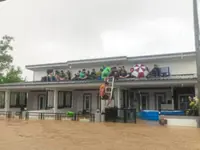A general view of the island of Hulhumale in the south of North Male Atoll, Maldives. Photos: Ishara S. Kodikara/AFP
Rising sea levels threaten to swamp the Maldives and the Indian Ocean archipelago is already out of drinking water, but the new president says he has scrapped plans to relocate citizens.
Instead, President Mohamed Muizzu promises the low-lying nation will beat back the waves through ambitious land reclamation and building islands higher – policies, however, that environmental and rights groups warn could even exacerbate flooding risks.
Already a subscriber? Log in
Save 30% OFF The Star Digital Access
Cancel anytime. Ad-free. Unlimited access with perks.





